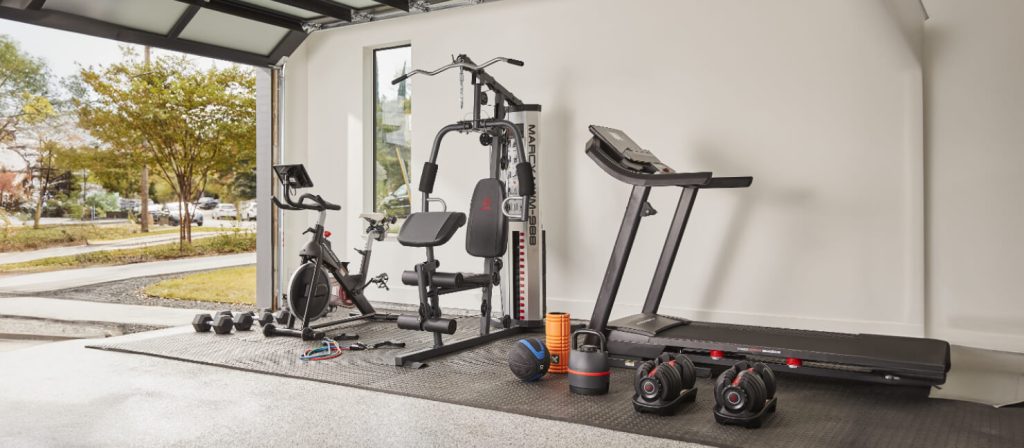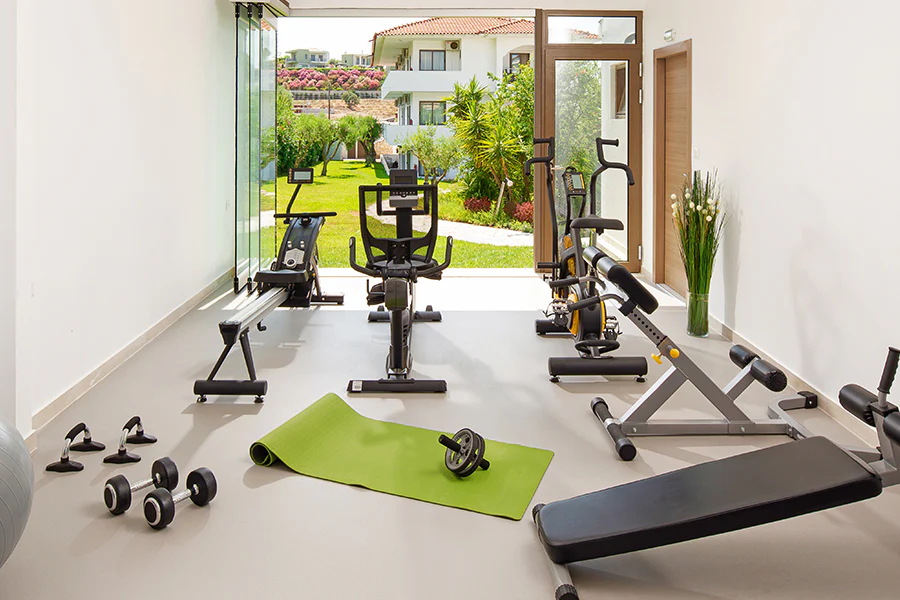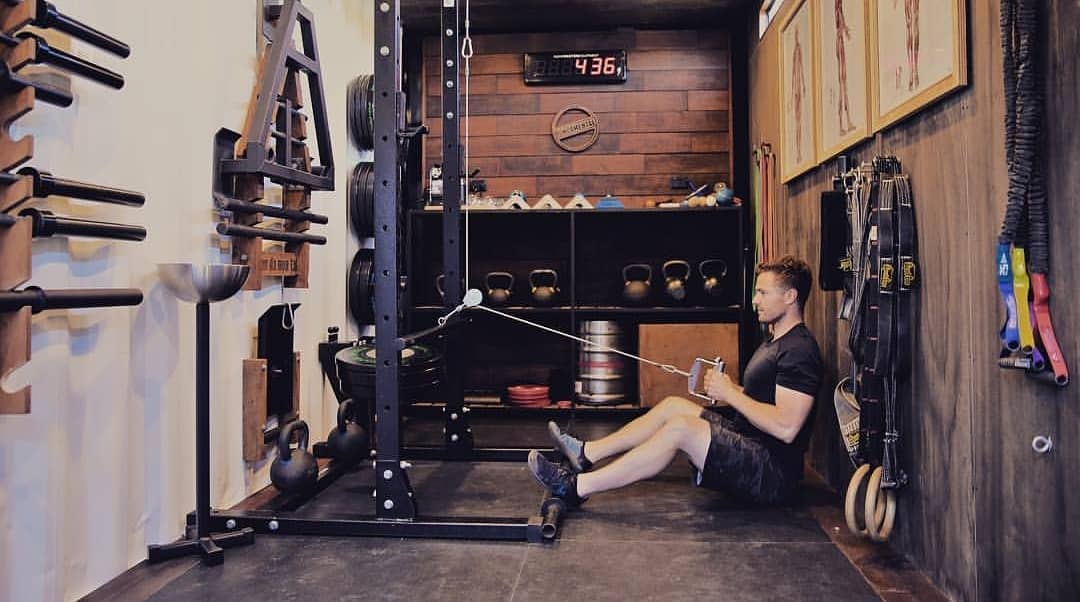Setting up a home gym has never been more popular or practical. Whether you’re looking to save time, money, or simply prefer the comfort and convenience of working out at home, creating your own fitness space can be one of the best investments you’ll make for your health and wellness journey.
The beauty of a home gym setup lies in its flexibility. You don’t need a mansion or thousands of dollars to create an effective workout space. With the right planning and equipment choices, you can build a home gym that fits your budget, space, and fitness goals.
Planning Your Home Gym Space
Before diving into equipment purchases, it’s crucial to assess your available space and establish your fitness priorities. Your home gym doesn’t need to be a dedicated room – it can be a corner of your bedroom, garage, basement, or even your living room.
Space Considerations:
- Measure your available area (length, width, and ceiling height)
- Ensure adequate ventilation and lighting
- Consider flooring options to protect both your equipment and floors
- Plan for storage solutions to keep equipment organized
- Think about noise levels, especially if you live in an apartment
Define Your Fitness Goals: Your equipment choices should align with what you want to achieve. Are you focused on strength training, cardiovascular fitness, flexibility, or a combination? Understanding your primary goals will help you prioritize your equipment purchases and avoid unnecessary spending.

Budget-Friendly Home Gym Setup ($100-$300)
Starting your home gym journey doesn’t require a massive investment. This budget range can provide you with everything needed for effective full-body workouts.
Essential Equipment for Beginners
Resistance Bands Set ($20-$40) Resistance bands are the ultimate space-saving and versatile equipment. A quality set with multiple resistance levels can provide strength training for every muscle group. Look for sets that include door anchors, handles, and ankle straps for maximum versatility.
Adjustable Dumbbells or Dumbbell Set ($50-$100) Dumbbells are fundamental for strength training. If space is limited, consider adjustable dumbbells that can replace an entire rack. For tighter budgets, a set of fixed-weight dumbbells in 10, 15, and 20-pound options covers most beginner needs.
Yoga Mat ($15-$30) A high-quality yoga mat serves multiple purposes: floor exercises, stretching, yoga, and protecting your floors. Look for mats that are at least 6mm thick for adequate cushioning.
Jump Rope ($10-$25) One of the most effective and affordable cardio tools available. A good jump rope provides excellent cardiovascular exercise and can burn more calories than running.
Kettlebell ($30-$50) A single kettlebell in the 15-35 pound range (depending on your fitness level) can provide incredible full-body workouts. Kettlebells are perfect for combining strength and cardio training.
Sample Budget Workout Routine
With this basic equipment, you can perform comprehensive workouts targeting all major muscle groups:
Upper Body: Resistance band rows, dumbbell presses, kettlebell swings Lower Body: Bodyweight squats with resistance bands, dumbbell lunges, kettlebell goblet squats Cardio: Jump rope intervals, kettlebell circuits Core: Mat exercises, plank variations, kettlebell carries
Mid-Range Home Gym Setup ($300-$800)
This budget range allows for more specialized equipment and higher quality items that will last longer and provide more workout variety.
Expanded Equipment Options
Power Tower or Pull-up Bar ($100-$200) Adding pulling movements to your routine is crucial for balanced development. A doorway pull-up bar is the most space-efficient option, while a power tower provides additional exercise options like dips and leg raises.
Adjustable Bench ($100-$200) An adjustable bench opens up numerous exercise possibilities, especially when combined with dumbbells. Look for benches that adjust from flat to incline positions and can support adequate weight.
Olympic Barbell and Weight Plates ($200-$400) For serious strength training, nothing beats a barbell. Start with an Olympic barbell and add weight plates gradually. This investment provides the foundation for compound movements like squats, deadlifts, and bench presses.
Suspension Trainer ($100-$150) Suspension trainers like TRX systems provide bodyweight training with adjustable resistance. They’re excellent for functional movements and can be anchored to doors, ceilings, or outdoor structures.
Foam Roller and Recovery Tools ($30-$50) Recovery is as important as the workout itself. Invest in a foam roller, lacrosse balls, and other recovery tools to maintain flexibility and prevent injury.
Advanced Workout Possibilities
With this expanded equipment list, your workout options multiply significantly:
Compound Movements: Barbell squats, deadlifts, bench press, rows Functional Training: Suspension trainer workouts, kettlebell complexes Targeted Isolation: Bench-supported dumbbell exercises Recovery Sessions: Dedicated stretching and foam rolling routines
Premium Home Gym Setup ($800-$2000+)
This investment level allows for commercial-quality equipment and specialized machines that can rival any commercial gym.
High-End Equipment Additions
Power Rack or Squat Rack ($300-$800) A power rack is the centerpiece of any serious home gym. It provides safety for heavy lifting and enables exercises that would otherwise require a spotter. Look for racks with pull-up bars, weight storage, and cable attachments.
Cable Machine System ($400-$800) Cable machines provide smooth, consistent resistance and enable exercises that are difficult to replicate with free weights. Many modern cable systems are compact and can be integrated with power racks.
Cardio Equipment ($300-$1500) While not essential, dedicated cardio equipment like a treadmill, elliptical, or rowing machine can be valuable for those who prefer indoor cardio or live in areas with harsh weather.
Specialty Bars and Attachments ($100-$300) Olympic bars, trap bars, ez-curl bars, and various cable attachments can add variety and target muscles from different angles.
Flooring and Mirrors ($200-$500) Quality rubber flooring protects your equipment and reduces noise. Mirrors can help with form checking and make your space feel larger and more professional.
Creating a Complete Training Environment
At this investment level, you can create a home gym that accommodates any training style:
Powerlifting: Full power rack setup with competition-grade equipment Bodybuilding: Cable systems and isolation equipment for targeted muscle development Functional Fitness: Open floor space with varied equipment for movement-based training Cardio Training: Dedicated machines for different types of cardiovascular exercise
Smart Shopping Tips for Home Gym Equipment
Building a home gym is an investment, and smart shopping can help you get the most value for your money.
When to Buy New vs. Used
Buy New:
- Items with warranties (major equipment like treadmills, power racks)
- Hygiene-sensitive items (yoga mats, foam rollers)
- Safety-critical equipment (barbell collars, power rack safety bars)
Consider Used:
- Weight plates and dumbbells (weight is weight)
- Benches and racks (if structurally sound)
- Cardio equipment (if recently serviced)
Best Places to Find Deals
Online Marketplaces: Facebook Marketplace, Craigslist, and OfferUp for local deals Seasonal Sales: End of January (post-New Year resolution period) and Black Friday Commercial Gym Closures: Occasionally available equipment from closing gyms Warehouse Stores: Costco and Sam’s Club often have competitive prices on fitness equipment
Quality Indicators to Look For
Build Quality: Solid welds, thick steel, and stable construction Weight Capacity: Equipment should handle significantly more than your current needs Warranty: Reputable manufacturers offer warranties on their products Reviews: Check multiple review sources before making significant purchases

Maximizing Your Home Gym Investment
Once you’ve invested in equipment, maximizing its utility becomes crucial for long-term success.
Storage and Organization Solutions
Vertical Storage: Wall-mounted racks for weights and equipment Multi-Purpose Furniture: Benches with built-in storage Modular Systems: Equipment that can be easily moved and reconfigured Ceiling Storage: Overhead storage for rarely used items
Maintenance and Care
Regular Cleaning: Wipe down equipment after each use Lubrication: Keep moving parts properly lubricated Inspection: Regularly check for wear, loose bolts, or damage Climate Control: Protect equipment from extreme temperatures and humidity
Programming and Progression
Having great equipment means nothing without a solid workout plan:
Progressive Overload: Gradually increase weight, reps, or difficulty Variety: Use different equipment combinations to prevent boredom Periodization: Plan training phases with different focuses Tracking: Keep records of workouts and progress
Common Home Gym Mistakes to Avoid
Learning from others’ mistakes can save you time, money, and frustration.
Equipment-Related Mistakes
Buying Too Much Too Soon: Start with basics and add equipment as needs develop Ignoring Space Constraints: Measure twice, buy once Choosing Fashion Over Function: Focus on versatility and build quality Neglecting Safety: Don’t skip safety equipment like collars and mats
Setup and Usage Mistakes
Poor Ventilation: Ensure adequate airflow for comfort and equipment longevity Inadequate Lighting: Good lighting is essential for safety and motivation Ignoring Noise: Consider impact on neighbors and family members Lack of Planning: Design your space layout before purchasing equipment
Conclusion: Your Home Gym Journey Starts Now
Creating the perfect home gym is a personal journey that should reflect your fitness goals, available space, and budget constraints. The key is to start with quality basics and build your setup over time as your needs and interests evolve.
Remember that the best home gym is the one you’ll actually use consistently. Focus on equipment that excites you and supports your fitness goals rather than trying to replicate every machine at your local commercial gym.
Whether you’re starting with a $100 budget or ready to invest $2000+, the principles remain the same: choose versatile, quality equipment that fits your space and supports your goals. Your home gym should be a space that motivates you to move, challenges you to grow stronger, and provides the convenience that makes consistent exercise achievable.
The investment you make in your home gym setup is truly an investment in your health, convenience, and long-term fitness success. Start with what you can afford, be patient with the process, and enjoy the journey of creating your perfect workout space.
Your fitness transformation begins with that first piece of equipment – so take the first step and start building your home gym today.
